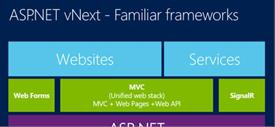5 Ways CMS Can Add Value to Your Business
CMS, also known as Content Management System is a software application that allows users to manage and build websites without coding or constructing them from ground zero.
This software is an excellent application for people who don't know how to code.
A CMS allows users to modify, create, and post content in a user-friendly way. People have found this software increasingly helpful because they can download or purchase extensions or templates instead of doing complex coding for hours.
To understand how CMS may add value to your business, one first needs to understand how it works and its potential benefits.
How It Works
Whilst CMS has become increasingly popular and favored among many creators, some still need to learn how it works. It's natural to feel confused with new applications, but it's programmed in a way that makes it user-friendly.
Working with CMS is straightforward; but there are a few steps to be aware of.
Firstly, if someone wants to work with CMS, they need to know HTML. This allows them to add navigation tools, images, text, and other building blocks of a site.
Secondly, a person will need to learn Cascading Style Sheets (CSS) so they can style those elements and match them to suit the look and feel of the brand.
Lastly, a person also needs to finish writing JavaScript to create a more advanced site.
The most popular way people use this software is through cloud-based CMS. This is because, in addition to how easy CMS initially is, the cloud makes it even easier and user-friendly.
5 Ways CMS Can Add Value to a Business
Having an understanding of how CMS works makes it simpler and less confusing to use. While a few people are already vaguely familiar with how it adds value to a business, others have yet to understand how it specifically does so.
Here are five examples of how CMS can add value to a business:
1. No Coding Knowledge Required
Using CMS is a sure way to get rid of excessive and complex coding. CMS is a revolution in that it doesn’t require any coding knowledge. This means a company doesn’t need to spend hefty sums on coding experts.
This software application can modify, manage, customize, and manage the design of a site without a problem. It also adds functionality to a site with ease. No coding involved!
As a result, businesses with fewer resources and a smaller budget will greatly benefit from CMS.
2. Easy Collaboration
Many users can work and access their work on a CMS at any time, all at once. This means that whenever they want to access their content, they can, at any given moment, simultaneously.
For example, the marketers, IT team, and developers can work on the same landing page simultaneously. This is the perfect opportunity for businesses to make their employees work more in sync with each other.
Entrepreneurs or small businesses especially benefit from this because it increases productivity rates and improves communication between departments.
3. User Permissions and Roles
With the help of a CMS, people can create and collaborate in safe and efficient ways; this is appreciated after the pandemic hit. This is possible because of the built-in user permission and roles. For instance, content writers will have all permissions to publish, write, and create content. However, they won’t be able to make significant changes to the site’s functionality or even delete plug-ins.
Without CMS, creators have to make complex codes from scratch, which is time-consuming. And if these creators don’t have the proper experience in coding and programming, they will face a lot of difficulty in managing and optimizing the comprehensive web page design.
4. SEO Features
All CMS platforms have built-in SEO features and add-ons to help creators optimize a web page according to search engine rules.
By using these third-party or built-in features, creators can:
- Customize Meta descriptions and page titles, add keywords, and more.
- Select an SEO-friendly URL Structure.
- Add image ALT text.
- Include breadcrumbs navigation.
- Make XML sitemaps.
- Customize page loading frequency.
These features and tools improve the chances of a site being on the first few search options among other high-rated websites.
5. Predesigned Templates
Most CMS platforms have a wide collection of templates that allow users to customize their aesthetic and overall appearance quickly. This also impacts how the site reacts and operates.
For instance, if someone chooses a responsive template, it will make the site look good on all devices without the need for comprehensive coding.
Predesigned templates save the person from spending a lot of time on coding and designing; it also creates a faster, easier and more responsive website.
Bottom Line
There are many ways CMS can improve and add value to a business. Hopefully, after reading through this article, people have an understanding of its benefits and how it can take a business to new lengths
Related Posts
Blackmail is a serious crime that can cause immense stress and fear.
In today's data-driven world, databases form the backbone of countless applications and systems that power businesses across industries.
It’s no longer a hidden fact that social media platforms like Facebook affect the mental health of users.
Relocating an IT company is a significant endeavor that involves careful planning, coordination, and execution.
Today maintaining office security has become an important concern for businesses of all sizes.
A registered office address is a fundamental requirement for any business entity, whether it’s a corporation, limited liability company (LLC), or partnership.













Comments
comments powered by Disqus